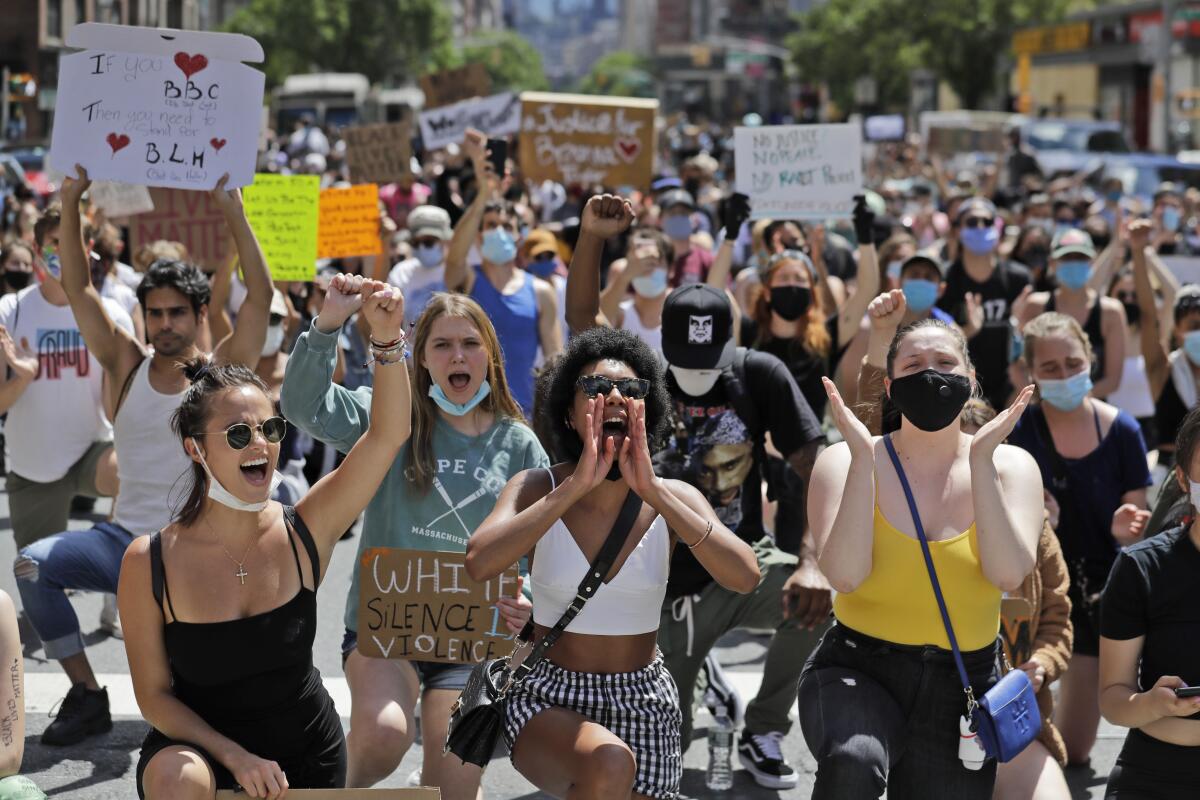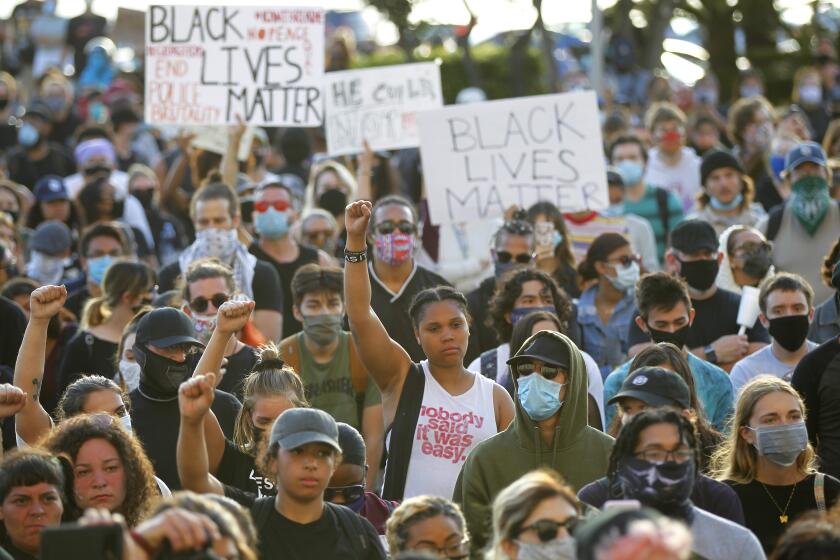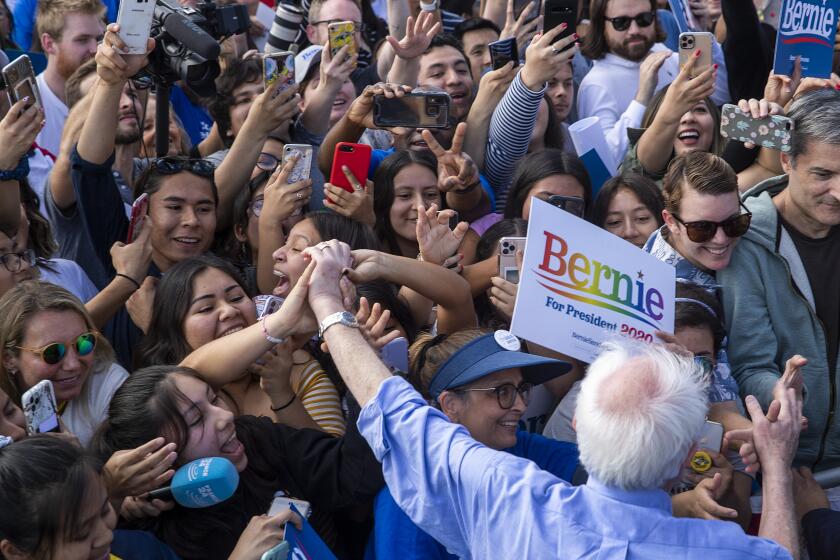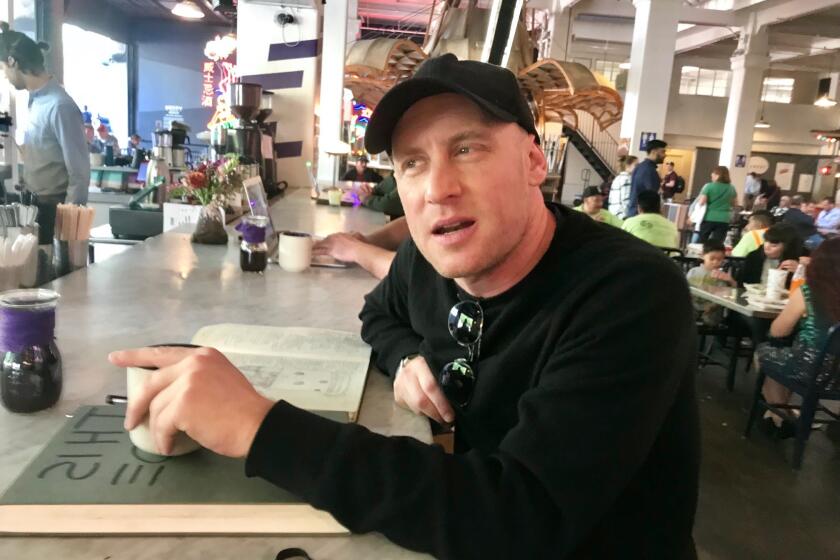Young people turned out to protest. Now, will they vote?

CHICAGO — Young adults have filled streets across the country on a scale not seen since the 1960s to protest for racial justice after the death of George Floyd. But whether that energy translates to increased turnout in November is another question.
They could make a difference in the presidential race — polls show President Trump is deeply unpopular with young voters — with control of the Senate and hundreds of local races also at stake. But some activists are concerned that their focus will be on specific causes instead of voting.
“In a normal election year, turning out the youth vote is challenging,” said Carolyn DeWitt, president and executive director of Rock the Vote, which works to build political power among young people. “That’s even more true now. People’s minds are not on it.”
Voters under 30 have historically turned out to vote at much lower rates than older voters, though the 2018 midterm election saw the highest turnout in a quarter-century among voters ages 18-29 — a spike attributed in part to youth-led movements such as March for Our Lives against gun violence.
There are signs that young people are getting more politically engaged. DeWitt said more people registered to vote through Rock the Vote’s online platforms last week — some 50,000 — than in any other week this year. The organization’s social media accounts had as many impressions between Monday and Friday of last week as they typically have in an entire month, with more than 1 million.
“It will just be incredibly important to us to make sure we’re protesting now and voting later,” DeWitt said.
Many leaders of the region’s largest events in the days after the killing of George Floyd had never before put together a demonstration.
That is not assured. The coronavirus crisis has halted traditional campaigning as well as big concerts and festivals, the kinds of places where campaigns and groups like Rock the Vote and HeadCount typically recruit young voters. On top of that, lawmakers’ efforts to change voting laws in some states could restrict younger voters, including college students.
Joe Biden’s Democratic presidential campaign is banking on these voters supporting him when the choice is a binary one between him and Trump. But that is not guaranteed.
“Our bar can’t be: Are you better than Trump?” said Cliff Albright, a co-founder of Black Voters Matter, which works to register voters and organize black communities. “For folks who are angry, who are in the streets, or who are at home and not engaged, you just telling me you’re better than this nut — that’s not enough.”
Many young people are still unfamiliar with Biden, “and they certainly don’t know where he stands on issues,” said Heather Greven, spokesperson for NextGen America. The group plans to spend at least $45 million to target young voters in battleground states.
Vermont Sen. Bernie Sanders is depending on young voters to turn out in California.
Biden said during a recent virtual fundraiser that he thought the protests would energize young people to turn out for him. “Now they are engaged,” Biden said. “They feel it. They taste it. And they’re angry and they’re determined.”
His campaign hasn’t made major changes to its youth outreach amid the protests, which started after a white Minneapolis officer pressed his knee into the neck of Floyd, a black man who was handcuffed and crying out that he couldn’t breathe. Instead, Biden has stuck largely with an initiative known as League 46 that combines groups such as Students for Biden and Young Professionals for Biden.
In an effort to appeal to younger, liberal voters, Biden has put progressive Rep. Alexandria Ocasio-Cortez on a climate change task force. But he doesn’t support some of the proposals that energized supporters of his primary rival Bernie Sanders, such as “Medicare for All.”
Ja’Mal Green, 24, an activist in Chicago, said he and other young people were disappointed by Biden’s rejection of a call to “defund the police,” which has become a rallying cry for protesters. The former vice president said Monday that an overhaul of policing is needed but can be done by putting conditions on federal funds.
That position may reassure older and moderate voters who helped Biden win the nomination, Green said, but young people want to see more change.
“If not, they’ll just say ‘to hell with the election,’” he said.
Robert Nava ordered his breakfast at Eggslut and sat down to relax Tuesday at Grand Central Market, only to be bothered by a stranger.
Many of the young people taking to the streets are focused on public officials with a more direct impact on their lives such as mayors, police chiefs and district attorneys because “they see that’s where the change is,” said Green, a Black Lives Matter leader who joined protesters in Minneapolis.
There were also protests in Louisville, Ky., over the death of Breonna Taylor, a 26-year-old black woman fatally shot by police in her home in March.
Tom Bergan, 22, attended a protest last week in Louisville, where he is a HeadCount field organizer. In pre-pandemic days, HeadCount focused on registering young people at concerts and festivals, but that’s shifted to more online organizing since COVID-19. For Friday’s protests, Bergan printed off large QR codes that he hoisted on a poster board. Anyone who scanned the code on their phone was connected to an online voter registration page.
Bergan said the crowd was enthusiastic, with many already registered to vote, and much of the conversations were around Taylor’s death and local changes such as the decision to limit no-knock warrants. He said the moment reminds him of 2018, when he volunteered with HeadCount during a March for Our Lives in St. Louis, as thousands of young people turned out in cold, rainy weather.
Get our L.A. Times Politics newsletter
The latest news, analysis and insights from our politics team.
You may occasionally receive promotional content from the Los Angeles Times.
That fall, turnout among voters ages 18-29 was nearly double what it was in 2014, with 28% of eligible young voters casting ballots, according to CIRCLE, the Center for Information and Research on Civic Learning and Engagement at Tufts University. They were much more likely to support Democratic than Republican congressional candidates, 64% to 34%, according to an AP VoteCast survey of more than 115,000 midterm voters nationwide.
That turnout is still less than in 2016 or 2012, presidential election years when about 45% of young voters turned out, according to CIRCLE, a drop from 2008, when Barack Obama was on the ballot and turnout soared to a level not seen since 1992.
Will 2020 bring another peak?
“That’s the big ‘if,’ and we don’t really know until November,” Bergan said.
More to Read
Get the L.A. Times Politics newsletter
Deeply reported insights into legislation, politics and policy from Sacramento, Washington and beyond. In your inbox three times per week.
You may occasionally receive promotional content from the Los Angeles Times.













